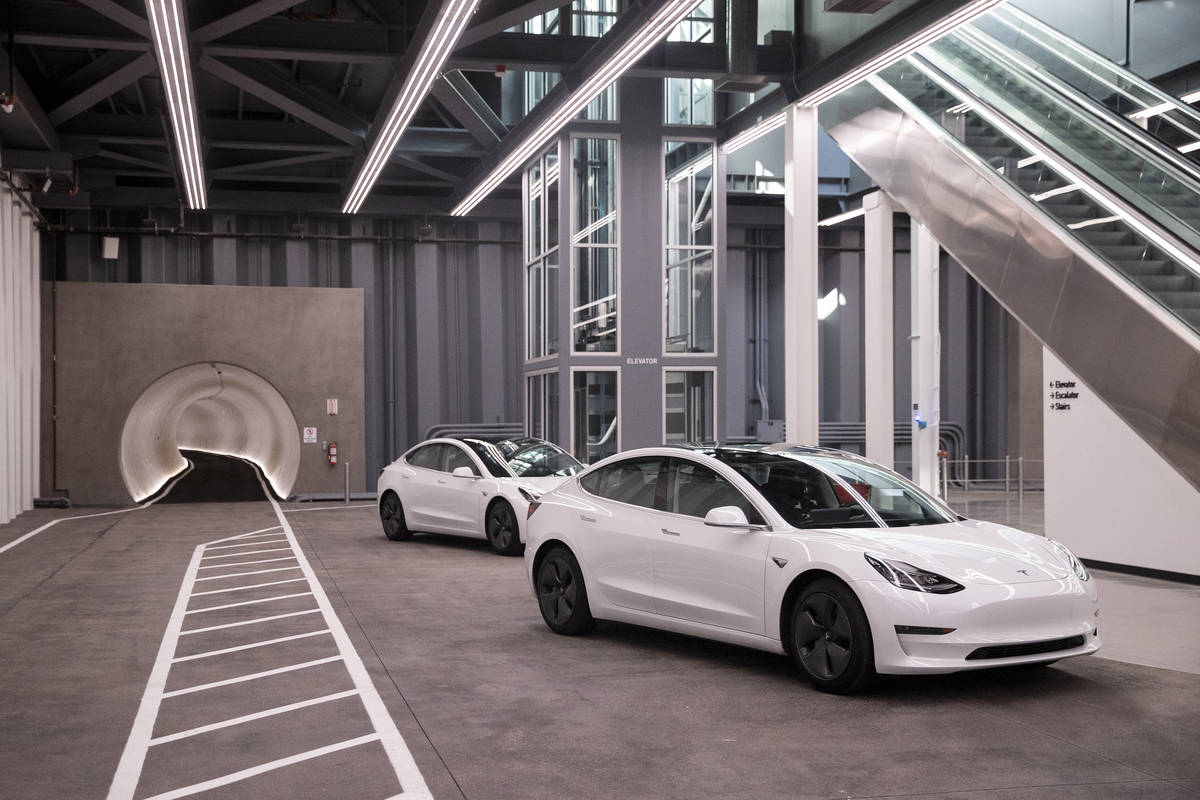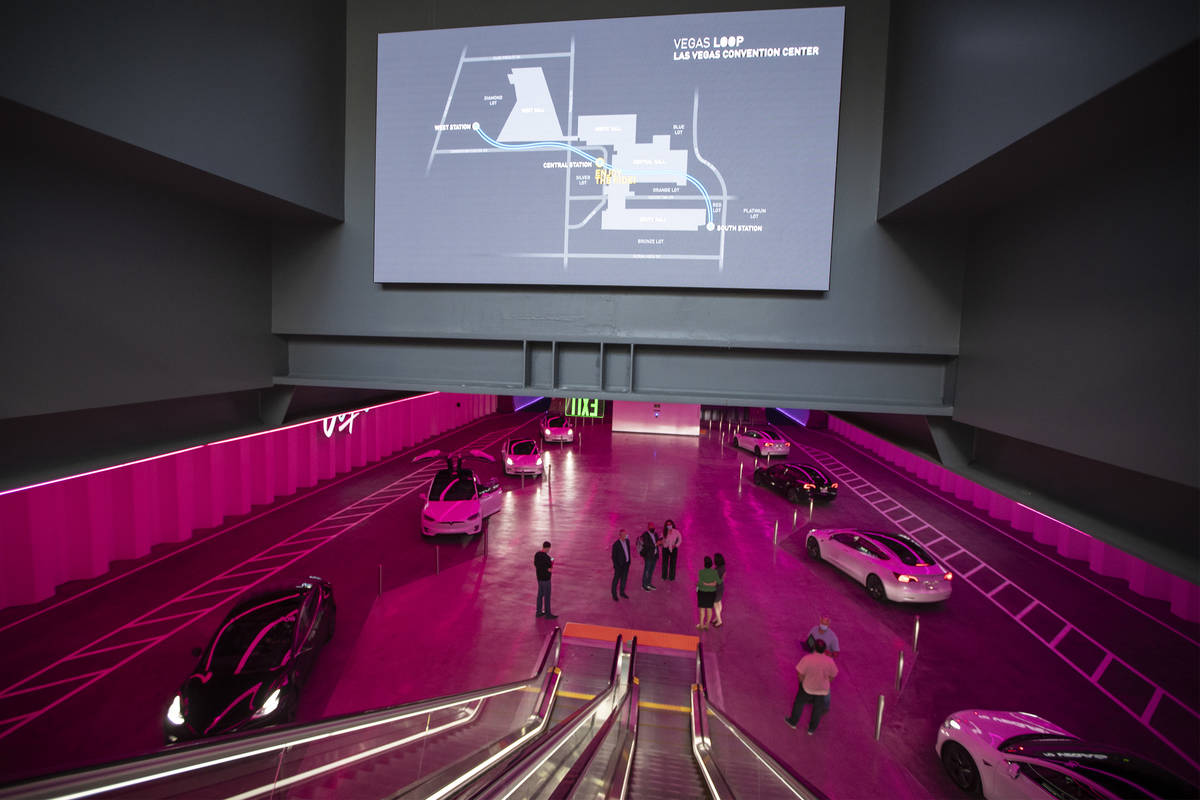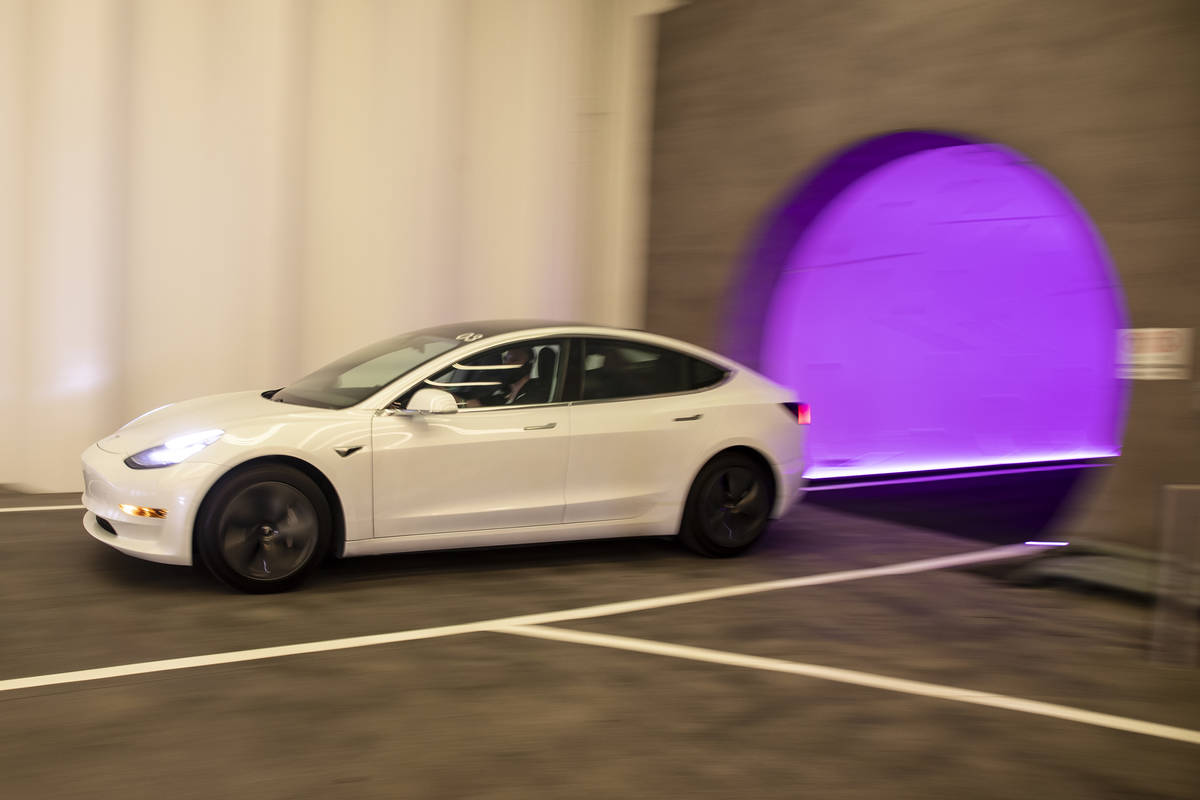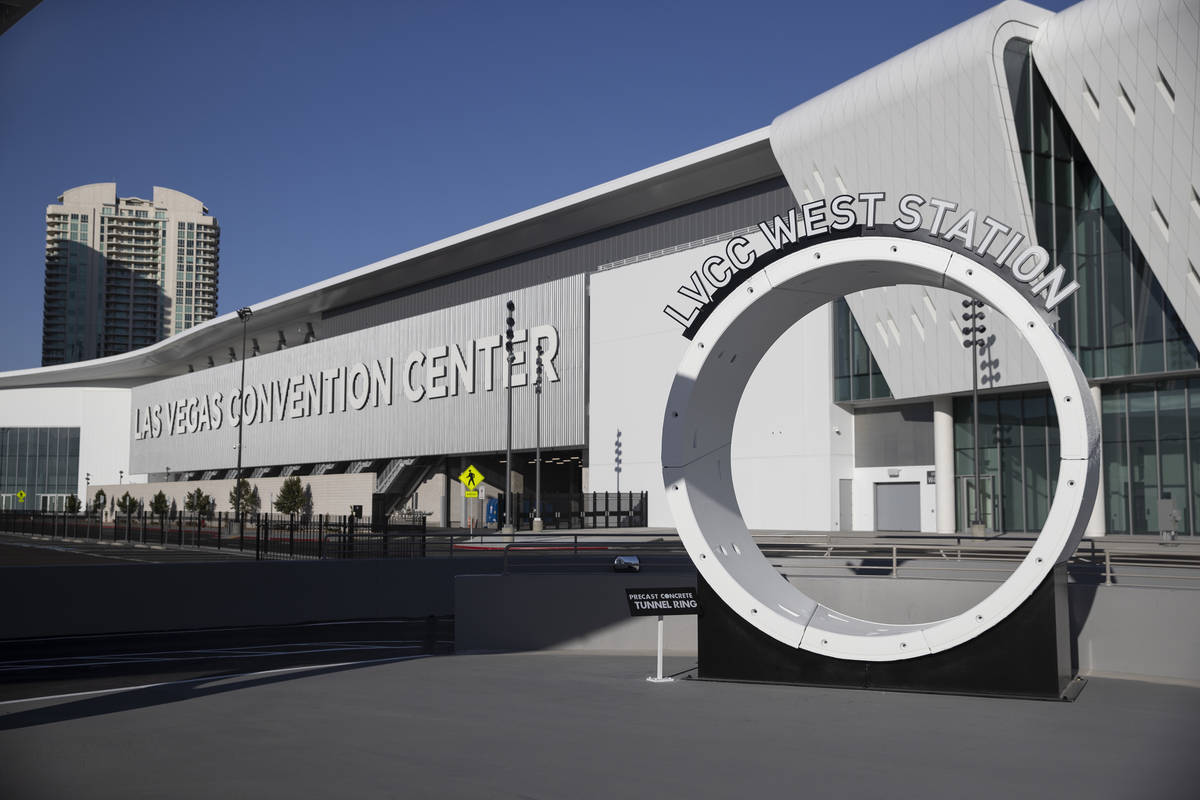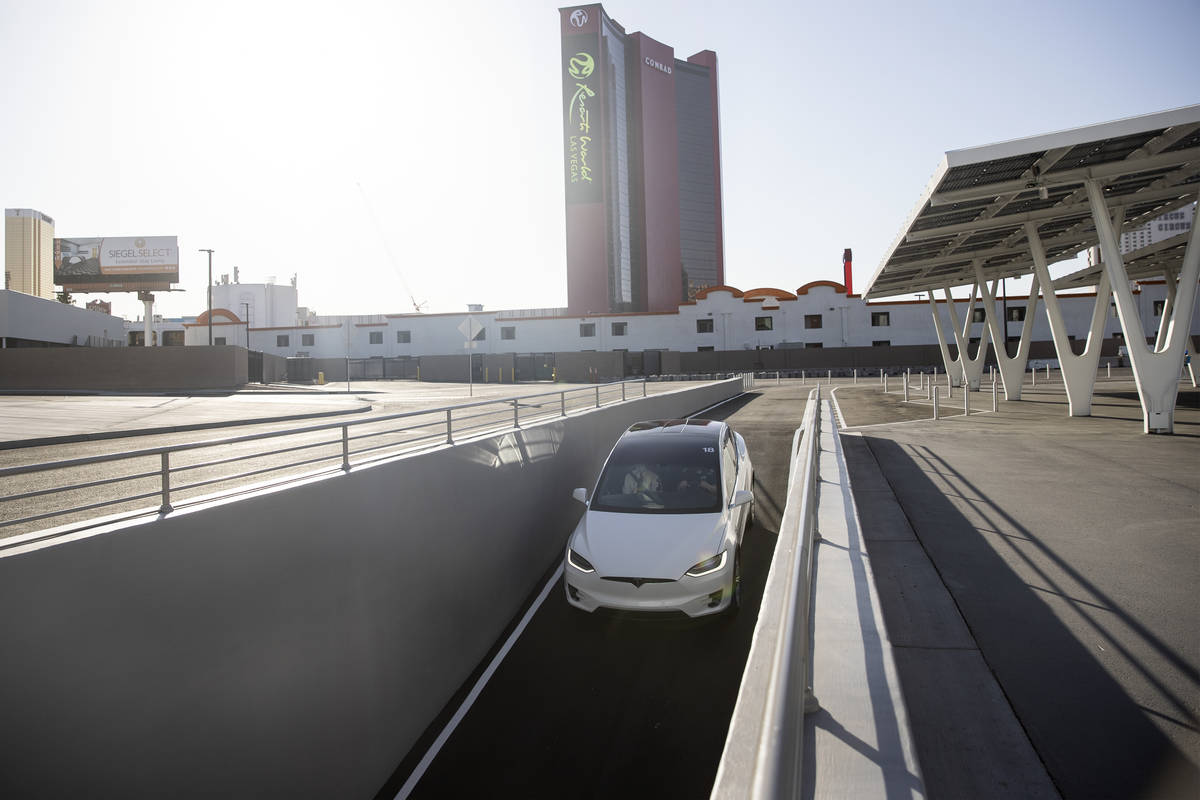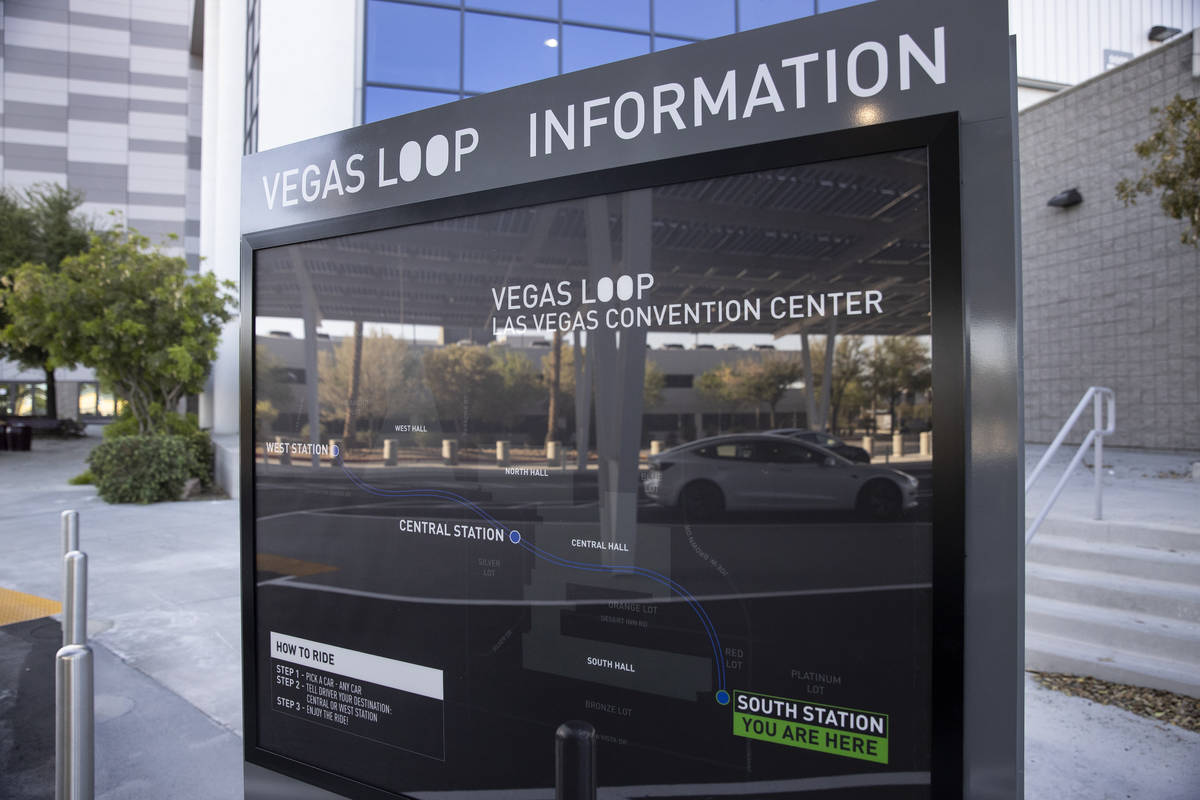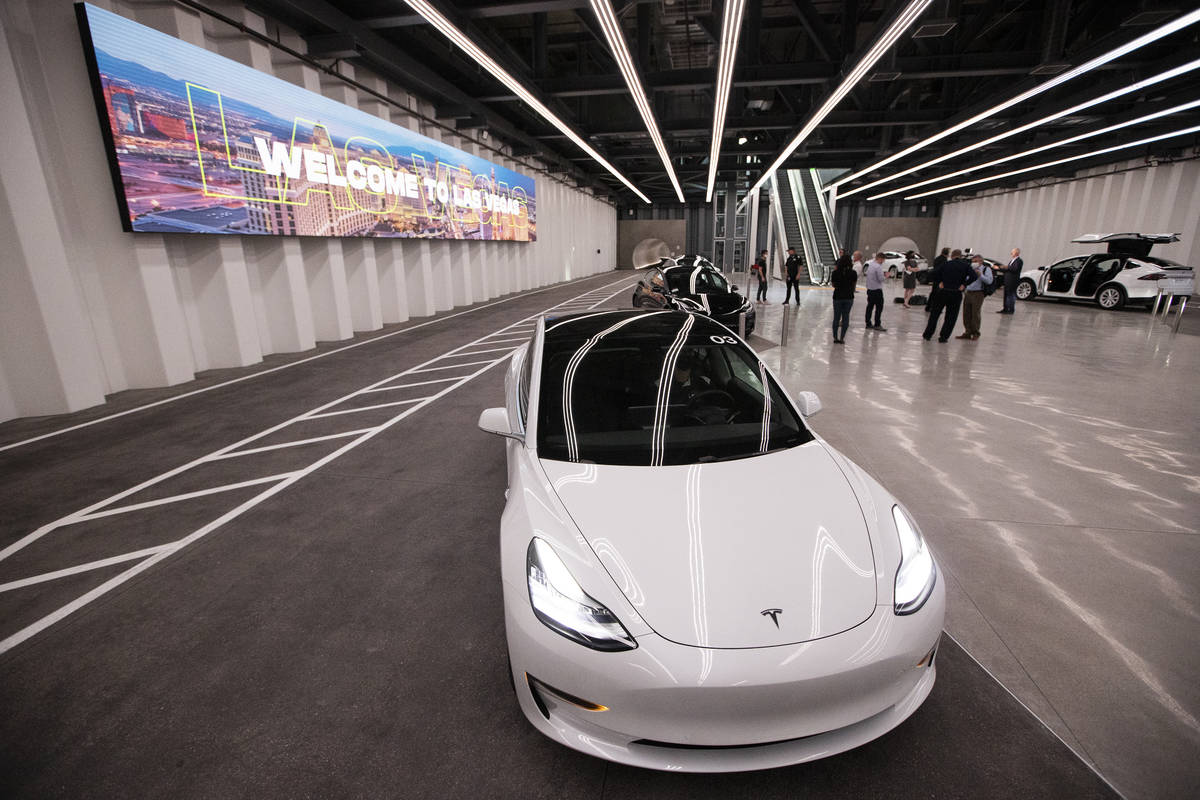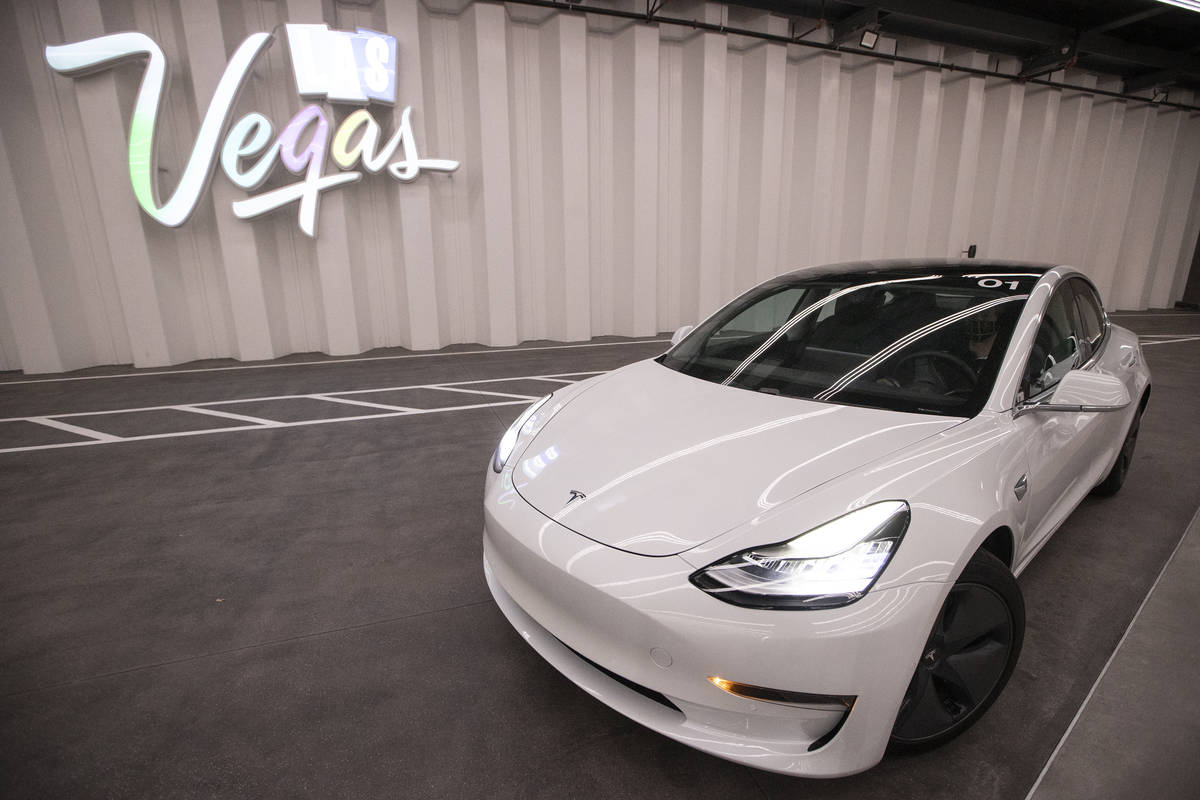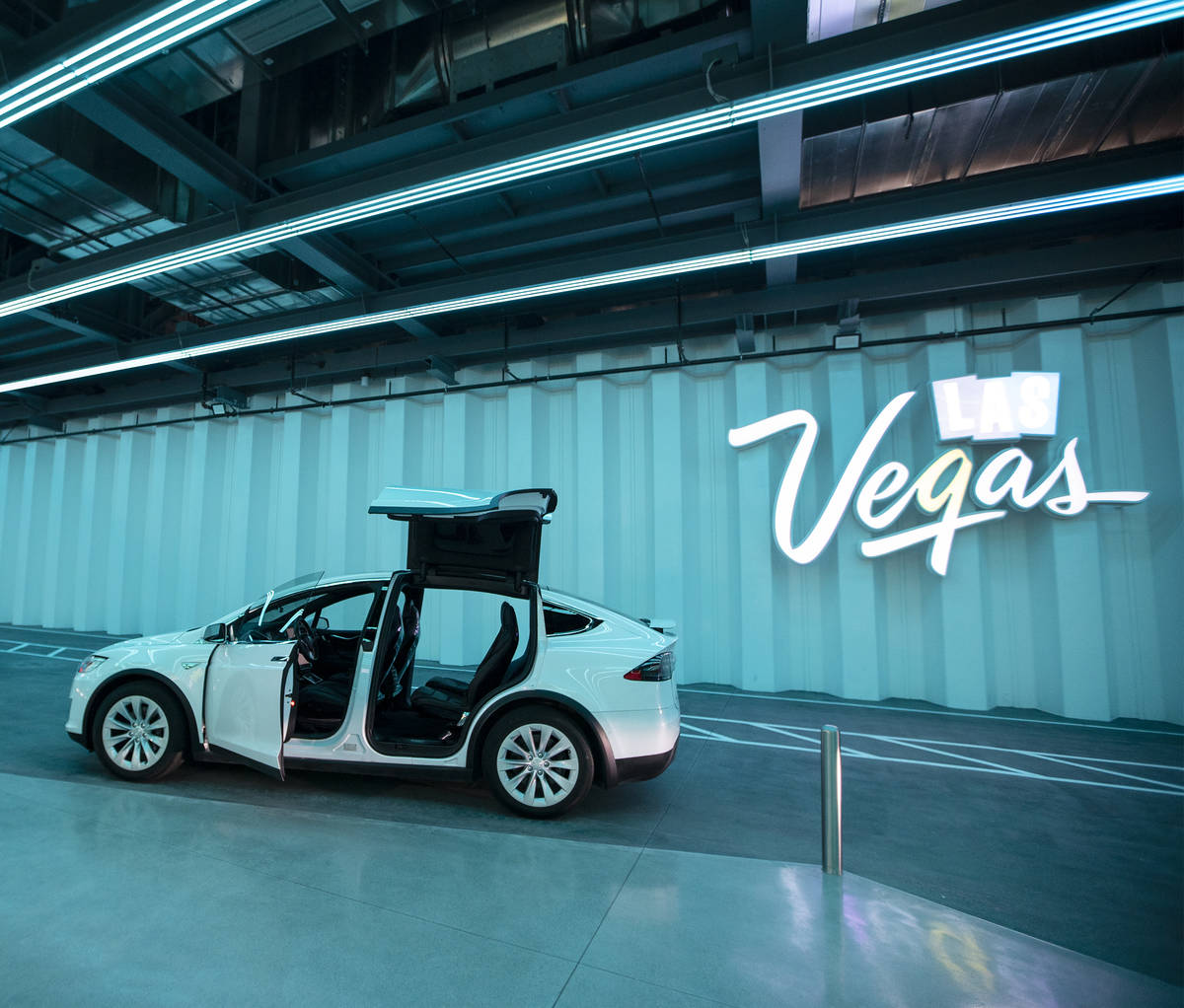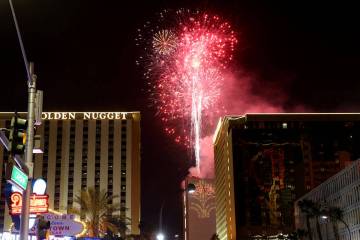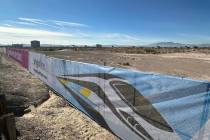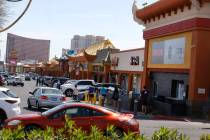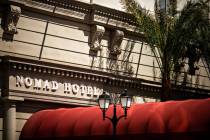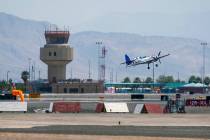Get a close look at shuttle system 40 feet beneath the convention center
After construction crews spent months drilling, digging, mucking, paving, lining and electrifying tunnels, representatives of Las Vegas media were invited underground to get their first look at The Boring Co.’s $52.5 million people-mover system Thursday.
Trips through the tunnels are an “only in Las Vegas” experience with LED lighting that cycles through a rainbow of colors from second to second lining the tunnel walls.
Cars have enough clearance in the tunnels that riders can open doors and get out in an emergency.
Drivers hit maximum speeds of about 35 mph on the straightaways of the tunnels. The electric vehicles run silently on the underground paved surfaces. At the ends of the tunnel, the Model X and Model 3 Teslas climb a ramp to reach the surface.
Parallel tunnels nearly a mile long will shuttle conventioneer passengers to and from three stations when the system, developed by entrepreneur Elon Musk, becomes fully operational. A certificate of occupancy has been issued to the Las Vegas Convention and Visitors Authority.
Crews began drilling the 4,475 feet of dirt and rock 40 feet underground in November 2019, completing the first tunnel bore in February 2020. Drilling concluded on the second tunnel in May 2020, and efforts to pave and light the tunnels ended late last year with several safety checks completed before the tunnels were turned over to the LVCVA.
Looking into one of the tunnels of the Boring Company’s Convention Center Loop. #vegas #boringcompany #elonmusk pic.twitter.com/e7ilc6ZmgQ
— Mick Akers (@mickakers) April 9, 2021
Throughout the construction, The Boring Co. wouldn’t let media members see progress but invited members of the LVCVA board of directors and dignitaries from other municipalities to see them.
Musk tweeted occasional photos from the tunnels and stations.
Steve Hill, president and CEO of the Las Vegas Convention and Visitors Authority, said Tesla sedans would be used initially for the system, and eventually there may be higher-capacity vehicles.
“It seems that during a pandemic is not the time to be increasing capacity,” Hill said before several reporters took off on rides to the ends of the system.
Hill said the Tesla fleet started out at 11 vehicles and is expected to expand to 35 and eventually reach 60.
Once operational, The Boring Co. will drive Tesla vehicles through the tunnel, turning a 1½-mile, 15-minute walk on the surface into a trip that takes a couple of minutes. Tesla vehicles capable of carrying up to 16 passengers are expected to be used in the system, but it hasn’t been disclosed when those vehicles would be delivered.
While the tunnels and vehicles are designed to operate in autonomous mode, LVCVA officials have said Boring Co. drivers would be employed in the early stages of operation for additional safety.
The system is designed with three stations, one underground near the entrance of the Las Vegas Convention Center’s Central Hall and two above-ground stations at the two ends of the system. Paved ramps are in place for vehicles to climb to the surface for above-ground loading on the east and west ends of the route. The east station, known as Station 1, is near an entrance to the South Hall, while Station 3, on the west side of the Convention Center campus, is near the new West Hall.
No details on queueing and loading procedures or wait times for rides have been given.
Here’s the escalator ride down into Central Station of the Boring Company’s Convention Center Loop. #vegas #boringcompany #elonmusk pic.twitter.com/RS0g3AuPKO
— Mick Akers (@mickakers) April 8, 2021
Future tunnel projects
Other Boring Co. tunnel projects are on the horizon in Las Vegas. Direct tunnels that would link the Las Vegas Convention Center with Encore Las Vegas and with Resorts World Las Vegas have been negotiated by Wynn Resorts Ltd., operators of Encore, and the Genting Group, which is building Resorts World.
In addition, The Boring Co. has negotiated with the city of Las Vegas and Clark County to develop what is being called the “Vegas Loop,” a 15-mile underground transit system with stations at local resorts and attractions.
Hill said Boring has indicated the cost to ride the Vegas Loop system would be somewhere between the amount it would take to ride a bus and the amount it would cost for an Uber ride. Like traditional ride-hailing companies, the cost would be per vehicle and not per person.
The biggest difference between the Vegas Loop and the Las Vegas Convention Center Loop, besides length, is the convention center people-mover, contracted to be built by the LVCVA, will be free for convention customers to ride while the Vegas Loop is being built on speculation with resorts paying for their own stations and riders being charged to be transported within the tunnels to their destinations.
The contract to build the Convention Center Loop was controversial because Musk’s company had never built one for commercial use and the local system will be the first one to be operated. The city of Miami has taken an interest in the system because it’s considering a tunnel beneath the Miami River to connect downtown with the Brickell Financial District.
The Tesla’s will feature drivers when the Boring Company system at the Las Vegas Convention Center kicks off but plan is to convert into autonomous rides in the future. #vegas #boringcompany pic.twitter.com/JWak5q8vNL
— Mick Akers (@mickakers) April 8, 2021
One big advantage of the Musk system is that it’s inexpensive to build. Tunnels are much narrower than conventional subway tunnels and The Boring Co.’s drilling machine manufactures bricks to line the tunnel as it digs, making it economical to build.
The Boring Co. has said that the citywide tunnel system would operate like ride-hailing with a passenger choosing the destination and the vehicle taking the most direct route there without stops at other stations.
The company hasn’t announced how much it expects to charge passengers.
Contact Richard N. Velotta at rvelotta@reviewjournal.com or 702-477-3893. Follow @RickVelotta on Twitter.



